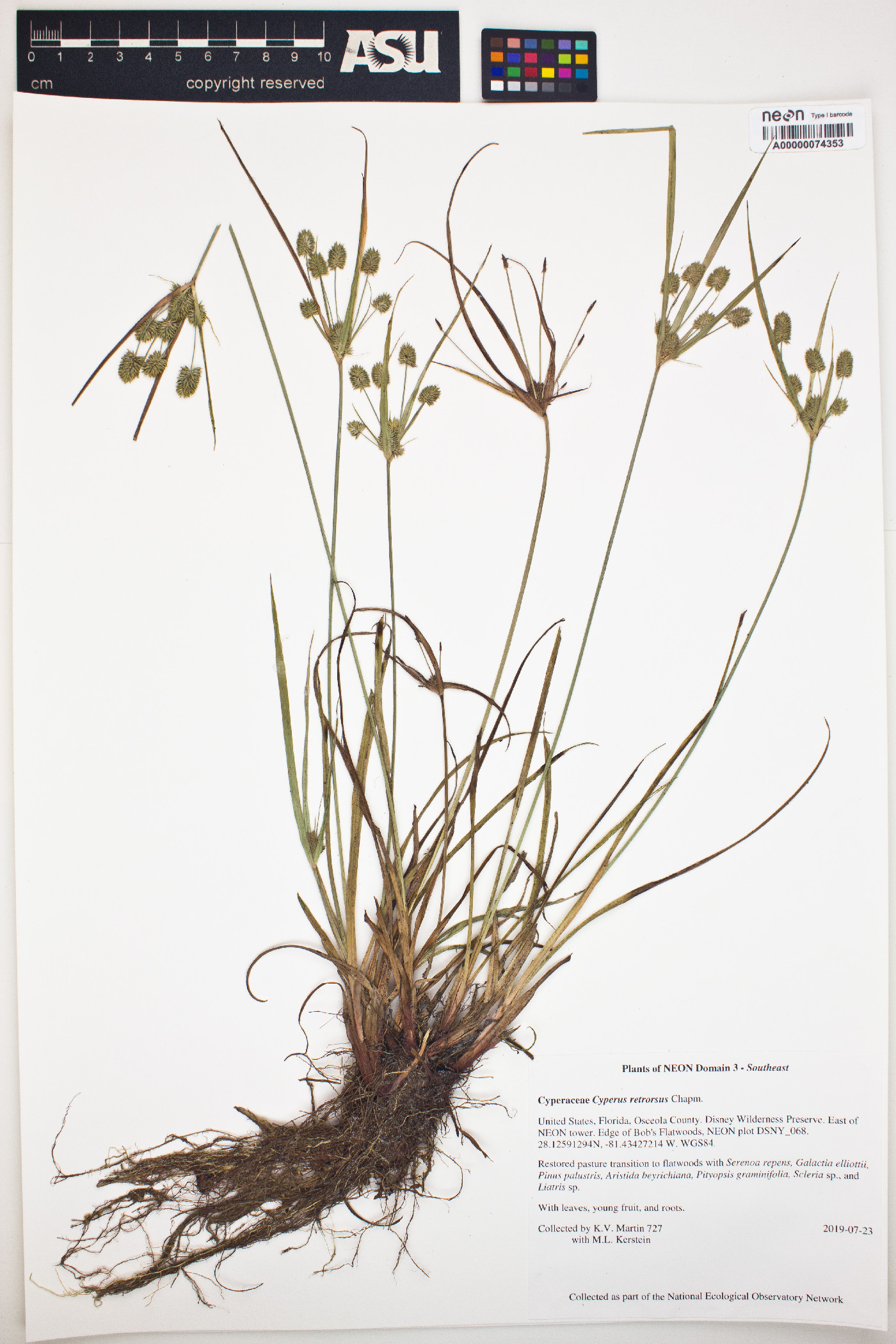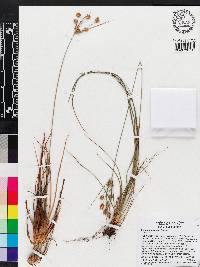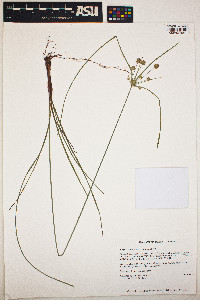|
|
|
|
Family: Cyperaceae
pine barren flatsedge, more...pine barren flatsedge
[Cyperus blodgettii Britton, moreCyperus globulosus var. robustus (Boeckeler) Shinners, Cyperus nashii Britton, Cyperus ovularis var. cylindricus (Elliott) Torr., Cyperus retrorsus var. cylindricus (Elliott) Fernald & Griscom, Cyperus retrorsus var. nashii (Britton) Fernald & Griscom, Cyperus retrorsus var. robustus (Boeckeler) Kük., Cyperus torreyi Britton, Mariscus cylindricus Elliott] |
Herbs, perennial, cespitose, shortly rhizomatous. Culms trigonous, 20-50(-85) cm × 1-2(-4) mm, glabrous. Leaves 3-6(-10), 10-40(-55) cm × 1.5-4(-5) mm, V- to inversely W-shaped. Inflorescence: spike 1, densely oblong-ovoid often with small basal branches, 8-16 × 4-12(-16) mm; rays 4-8(-11), 0.5-3.5(-8.5) cm; bracts (3-)4-6(-10), ascending at (30-)45°, flat to broadly V-shaped, (4-)14-30(-55) cm × 1-5 mm, scabridulous along margins only; rachilla deciduous, wings persistent, 0.2-0.3 mm wide. Spikelets 40-120, oblong-lanceoloid, subterete, 2.2-4(-4.5) × 0.8-1.6 mm; distal spikelet spreading or ascending; floral scales persistent, 2-5, appressed, brown to stramineous, or fuscous and lustrous, medially greenish and 1(-3)-ribbed, laterally greenish to yellowish white and 3-4-ribbed, oblong to oblong-lanceolate, 1.8-2.5 × 1-1.5 mm, subcoriacous. Flowers: anthers 0.3-0.5 mm; styles 0.5-0.8 mm; stigmas 0.6-0.9 mm. Achenes brown, oblong-ellipsoid, 1.2-1.7 × 0.5-0.6 mm, base cuneate, apex subacute, surfaces papillose. Fruiting summer (Jun-Aug). Open woods and thickets in moist to dry, sandy soils; 0-1000 m; Ala., Ark., Del., D.C., Fla., Ga., La., Md., Miss., Mo., N.J., N.Y., N.C., Okla., S.C., Tenn., Tex., Va.; Mexico (Tamaulipas). Cyperus retrorsus was reported in Indiana (M. L. Horvat 1941); we have been unable to confirm the report.
Perennial; stems very slender, smooth, 3-10 dm; lvs shorter than the stems, 3-5 mm wide; bracts 4-8, usually surpassing the infl; rays 5-9, to 10 cm; spikes short-cylindric, 6-25 נ6-12 mm; spikelets very numerous, crowded, radiating horizontally, 3-6 mm, 1-3-fld; scales thin, ovate, 2-2.5 mm, multinerved, obtuse or minutely mucronulate; achenes oblong-trigonous, 1-1.5 mm, a third to half as thick. Sandy barrens and coasts; s. N.Y. to Fla. and Tex., mostly on the coastal plain, n. in the interior to Ky. and Okla. (C. cylindricus, a preoccupied name; C. ovularis var. c.; C. torreyi) Gleason, Henry A. & Cronquist, Arthur J. 1991. Manual of vascular plants of northeastern United States and adjacent Canada. lxxv + 910 pp. ©The New York Botanical Garden. All rights reserved. Used by permission. |




